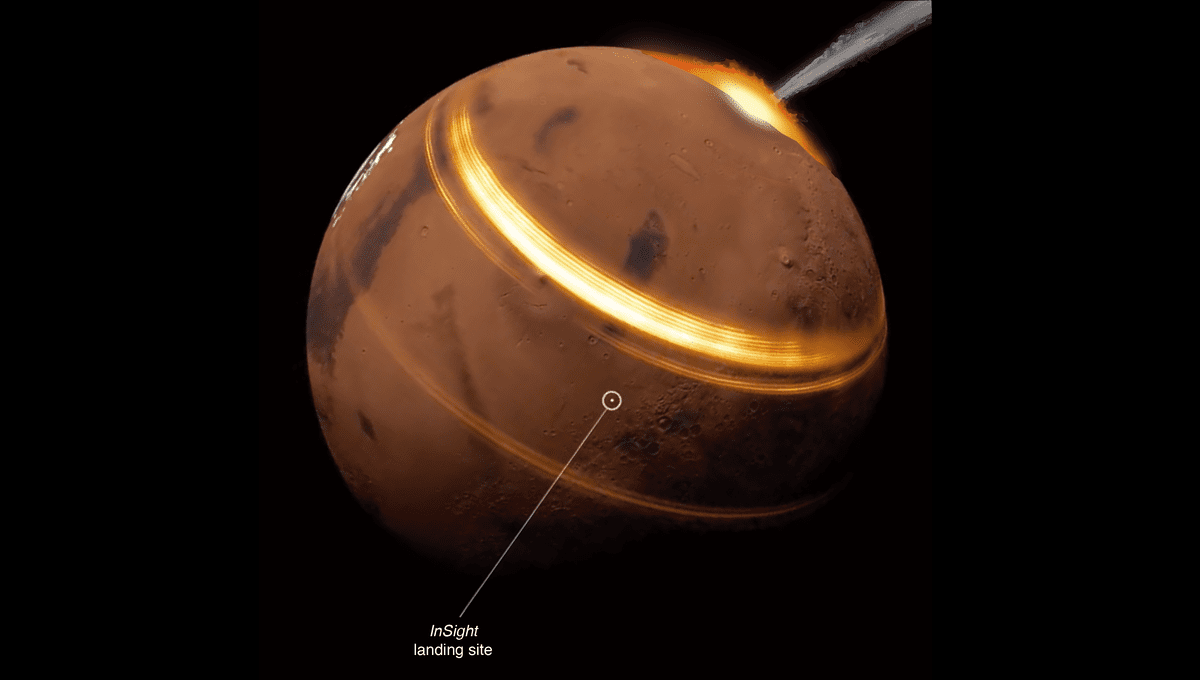
NASA’s InSight has studied many seismic events on Mars over the last couple of years. These “marsquakes” have given astronomers a better understanding of the interior of the planet but they were really hoping to see events with waves traveling along the surface, too. Luckily, the universe provided that as a Christmas gift in 2021. Last December 24, a meteorite struck Mars and InSight recorded it happening.
This event looked different from the over 1,300 other marsquakes recorded by the lander, and the best explanation for it was a meteorite impact. The team also suspected a previously recorded event may have also been caused by a cosmic rock hitting the planet.
Using the Mars Reconnaissance Orbiter circling Mars, researchers were able to find the craters formed by these impacts. The Christmas one formed a crater about 150 meters (492 feet) wide while the one recorded on September 18, 2021, formed one 130 meters (427 feet) across. These are the youngest known craters on Mars.
“The location was a good match with our estimates for the source of the quake,” Doyeon Kim, a geophysicist and senior research scientist at ETH Zurich’s Institute of Geophysics, said in a statement. “This is the first time seismic surface waves have been observed on a planet other than Earth. Not even the Apollo missions to the Moon managed it.”
A new paper on these types of waves has allowed scientists to understand the Red Planet’s interior better. They now believe that Mars’s crust is denser than previously thought, which has an impact on the various models of how the crust formed. Thanks to the new data, researchers had a clear idea of the structure of the crust to depths of between roughly 5 and 30 kilometers (3 to 18 miles) below the surface. The waves from the most powerful marsquake detected, also by InSight, produced surface waves providing a window up to 90 kilometers (55 miles) under the surface.
This new insight also challenges the prevalent idea that the crust of Mars is divided in two. The so-called “Mars dichotomy” comes from the diversity of terrain in the northern hemisphere (volcanic lowlands possibly covered by an ocean in ancient times) and the southern (highland plateau covered in meteorite craters). The data suggests that the crust is generally the same everywhere.
“As things stand, we don’t yet have a generally accepted explanation for the dichotomy because we’ve never been able to see the planet’s deep structure,” added Domenico Giardini, ETH Zurich Professor of Seismology and Geodynamics. “But now we’re beginning to uncover this.”
InSight has been a fantastic asset in our understanding of Mars but sadly, its days are numbered. Its solar panels are covered in dust, which the team hasn’t been able to remove, and it is getting less and less sunlight. It is expected to turn off for good in December this year.
The two studies on crater formation and seismic waves are published in Science.
Source Link: Meteors Slamming Into Mars Caught By Insight Reveals Secrets Of Martian Interior